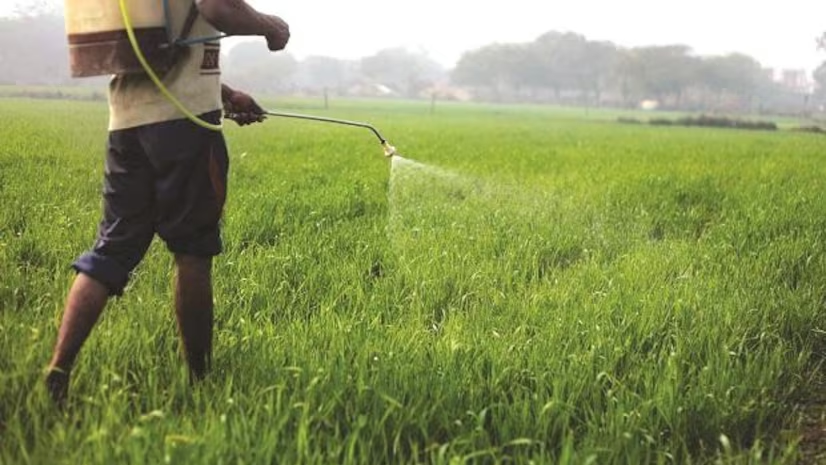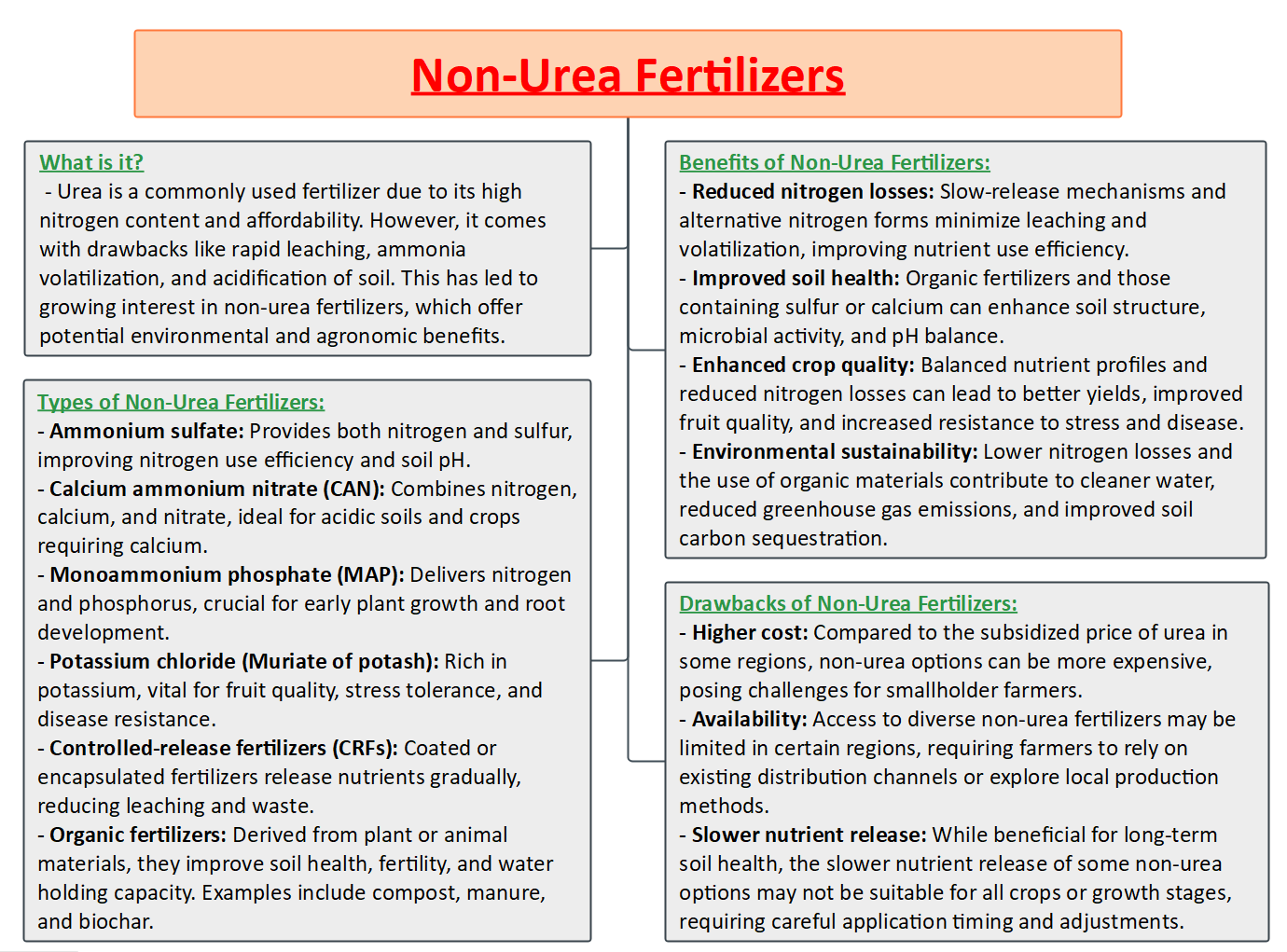Description

Copyright infringement not intended
Picture Courtesy: www.business-standard.com
Context: The Indian government has recently implemented measures to bring non-urea fertilizers under price control and fix profit margins, particularly for di-ammonium phosphate (DAP), muriate of potash (MOP), and other fertilizers receiving nutrient-based subsidy (NBS) support.
Details
- Non-urea fertilizers like di-ammonium phosphate (DAP) and muriate of potash (MOP) are now subject to "reasonable pricing" controls by the Indian government, which involves fixing profit margins. This move contrasts with urea, where the maximum retail price (MRP) is directly set by the government.
- Under the earlier nutrient-based subsidy (NBS) scheme introduced in April 2010, non-urea fertilizers were technically decontrolled, with their MRPs expected to be market-driven. However, the recent decision brings these fertilizers under pricing regulations, with the government providing a fixed per-tonne subsidy linked to nutrient content.

Key points from the new guidelines
Price Control for NBS Fertilizers
- Non-urea fertilizers, previously regarded as decontrolled under the Nutrient-Based Subsidy (NBS) scheme, were expected to have market-determined prices with government subsidies linked to nutrient content, unlike urea, which is traditionally government-controlled.
- The recent government intervention involves the introduction of guidelines to assess the reasonableness of Maximum Retail Prices (MRPs) for non-urea fertilizers, indicating a shift toward price control measures for these fertilizers under the NBS scheme.
Profit Margin Caps
- The Department of Fertilizers (DoF) has issued guidelines specifying maximum allowable profit margins for fertilizer companies. Importers are permitted a maximum profit margin of 8%, manufacturers 10%, and integrated manufacturers (those producing finished fertilizers and intermediates) 12%.
- These guidelines are part of an effort to control profits indirectly by capping the maximum allowable margins for companies involved in the production and distribution of fertilizers, emphasizing a balance between reasonable pricing and profitability in the fertilizer industry.
Refund of Unreasonable Profits
- Fertilizer companies that earn profits beyond the specified percentages (8% for importers, 10% for manufacturers, and 12% for integrated manufacturers) in a given financial year must refund the excess amount to the Department of Fertilizers (DoF) by October 10 of the following fiscal year.
- In case of failure to return the excess profits within the stipulated time frame, companies will be subject to interest charges, specifically at a rate of 12% per annum on a pro-rata basis, starting from the next day of the end of the financial year.
Indirect MRP Controls
- The guidelines introduce indirect Maximum Retail Price (MRP) controls on non-urea fertilizers, restricting the profits that companies can generate.
- The profit margins are determined based on the total cost of sales, encompassing production/import costs, administrative overheads, selling and distribution overheads, and other associated expenses, aiming to ensure a balance between reasonable pricing and operational costs.
Self-Assessment and Scrutiny
- Fertilizer companies are mandated to conduct self-assessments of unreasonable profits using data from cost auditor's reports and audited cost data approved by their board of directors.
- The self-assessment data must be submitted to the Department of Fertilizers (DoF) by October 10 of the subsequent fiscal year, after which the DoF will scrutinize the reasonability of Maximum Retail Prices (MRPs) based on the information provided by the companies.
Continued Price Monitoring
- Informal price control on non-urea fertilizers is expected to continue, particularly until the Lok Sabha elections are over. The industry source mentioned in the report indicates the advised MRPs for various fertilizers, which suggests continued government influence on pricing.

Must Read Articles:
FERTILIZERS SUBSIDY: https://www.iasgyan.in/daily-current-affairs/fertilizers-subsidy
HOW TO MAKE UREA MORE EFFICIENT AS A FERTILIZER: https://www.iasgyan.in/daily-current-affairs/how-to-make-urea-more-efficient-as-a-fertilizer
NUTRIENT-BASED SUBSIDY (NBS): https://www.iasgyan.in/daily-current-affairs/nutrient-based-subsidy-nbs
UREA UNDER NBS REGIME: https://www.iasgyan.in/daily-current-affairs/urea-under-nbs-regime#:~:text=The%20subsidy%20rates%20are%20revised,affordability%20of%20a%20particular%20fertilizer.
|
PRACTICE QUESTION
Q. India's soil health shows regional variations. Can a one-size-fits-all fertilizer policy be effective in addressing these disparities? If not, how can a nuanced approach be developed to optimize fertilizer use and soil health across different regions and soil types?
|














